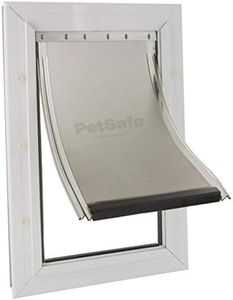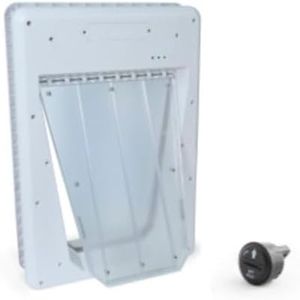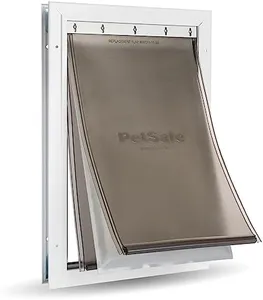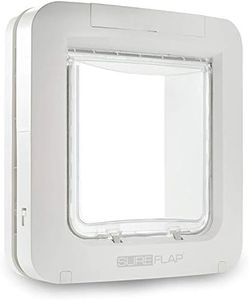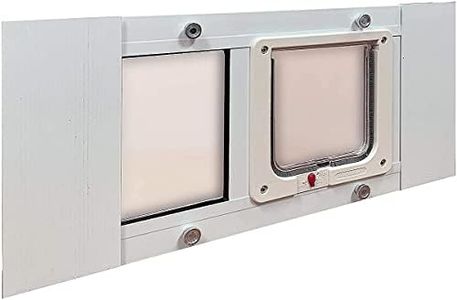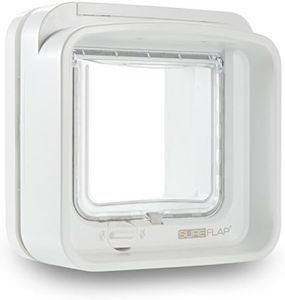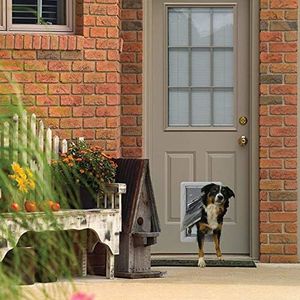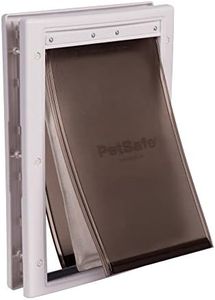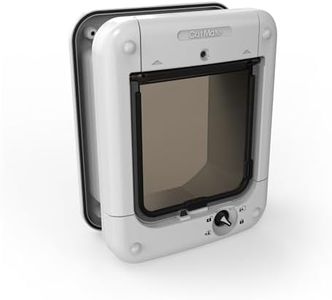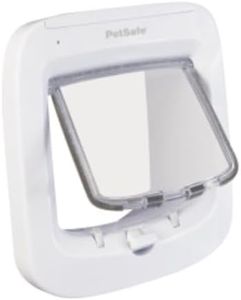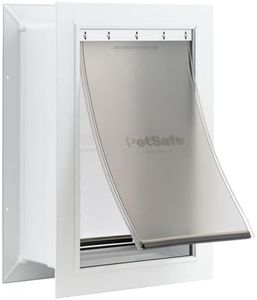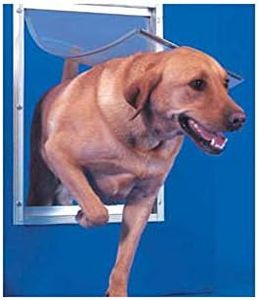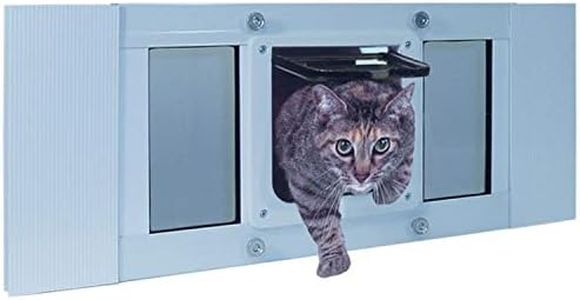We Use CookiesWe use cookies to enhance the security, performance,
functionality and for analytical and promotional activities. By continuing to browse this site you
are agreeing to our privacy policy
10 Best Cat Doors
From leading brands and best sellers available on the web.Buying Guide for the Best Cat Doors
Choosing the right cat door can make life easier for both you and your pet, allowing your cat to move freely between indoor and outdoor spaces while helping you maintain control over their access. When picking a cat door, it's important to consider your cat's habits, home layout, and security needs. A thoughtful approach involves understanding which features are important for your household and for your cat’s comfort.SizeSize refers to the dimensions of the opening through which your cat will pass. This is crucial because the door needs to be big enough for your cat to move comfortably but not so large that it compromises the structure or insulation of your door or wall. Common sizes range from small (for kittens or small breeds) to large (for bigger cats or homes wishing to accommodate other pets). Measure your cat's height and width, then match or slightly exceed those measurements when choosing, making sure not to go excessively large if unnecessary.
Installation LocationThis concerns where you will mount the cat door, such as on a wooden door, glass panel, sliding door, or wall. Each material may require a different type of cat door or installation method. Wood is generally easy to cut, while glass or walls may call for special tools or professional help. Think about the area where your cat needs access and select a door intended for that type of surface.
Locking MechanismThe locking mechanism determines how and when the door opens or closes. Some cat doors have simple manual locks you turn by hand, others allow for flexible locking options (e.g., in-only, out-only, fully locked, or free). More advanced versions use microchips or magnetic collars to let only your pet in or out. If you want to control times when your cat can go outside or keep stray animals out, look for models with more advanced or programmable locks.
Weatherproofing and InsulationWeatherproofing keeps out rain, wind, and drafts, helping maintain comfort and energy efficiency in your home. Doors may have special flaps, seals, or double-layer construction to prevent outdoor elements from coming inside. If you live in a region with harsh weather, prioritize models that emphasize insulation and tight seals.
Durability and MaterialThis refers to what the cat door is made from—commonly plastic, metal, or composite—and how well it withstands consistent use, chewing, scratching, and outdoor conditions. More robust materials last longer and resist damage, while basic plastic might be fine for light, indoor use. For active cats or high-traffic exterior doors, choose a durable design that won’t break easily.
Noise LevelSome cat doors make noise when they open or close, which can be startling to both pets and people, especially at night. Lower-noise doors often use soft flaps or magnetic closures for quiet operation. If your cat is nervous or you want to avoid nighttime disturbances, consider looking for low-noise models.
Ease of Use (for Cat and Owner)Ease of use covers how simple the door is for your cat to figure out, and for you to maintain and clean. Cats tend to adapt quickly, but very stiff or heavy flaps might intimidate timid animals. Check reviews or select designs promoting smooth, easy swinging for your cat’s comfort. For owners, removable flaps or easily cleaned surfaces add convenience to upkeep routines.
